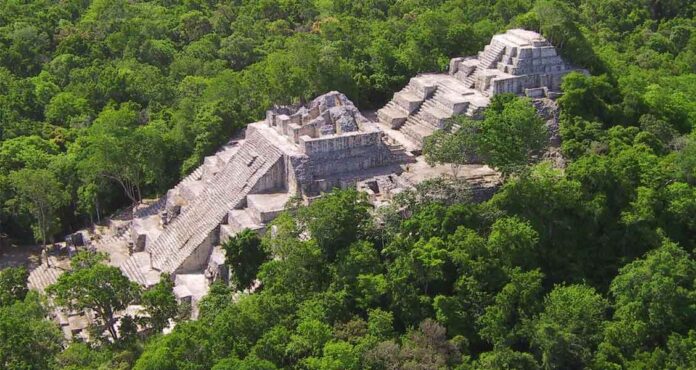The Lowlands The Mayans constitute the most complex area in terms of geographical characteristics, due to their large area and high biodiversity.
In general, the region is defined by having an altitude of less than 300 m, with the exception of the Mayan Mountains and the Sierra de Puuc, where higher elevations are found. Geologically, the Lowlands are made up of a metamorphic mantle composed mainly of limestone rock, which has been constantly modified by the action of water, earthquakes and other forms of erosion.
For geographical and cultural purposes it is appropriate to distinguish what are the Central Lowlands and the Northern Lowlands, which present quite particular features, although each of these two areas also has their own microregions.
The Central Lowlands make up what is known as Petén, and includes what is currently the department of Petén, Belize, southern Campeche and Quintana Roo, and the eastern area of Tabasco and Chiapas. Peripheral regions such as the lower basin of the Usumacinta River, the Copán Valley and the Gulf of Honduras may present some characteristics of the Highlands.
The vegetation of Petén is characterized by forests that reach more than 40 m in height, and rainfall is high, especially between the months of July and January.
Fertile soils are found in flood-prone areas and generally tend to be shallow, which limits extensive agriculture. The presence of some permanent water sources stands out, such as the Usumacinta, Grijalva, San Pedro, Candelaria, La Pasión, Belize and Hondo rivers; lakes such as Petén Itzá and Izabal; and the lagoons of Terminus, Yaxha and Bacalar.
The Northern Lowlands present a different panorama, with a drier climate and lower forests. The coastal and swampy areas, rich in mangrove forests, saline deposits and various marine products, are also quite important.
Despite having limitations for agricultural production, the Lowlands region was characterized by the development of the largest and most complex cities, which could have up to 100,000 inhabitants. Decades of environmental and agricultural studies have determined that this was possible thanks to the combination of different systems of intensive agriculture and hydraulic management, as well as the dispersed design of the housing areas that surrounded the ceremonial centers.
Furthermore, the key factor was water harvesting in many areas that do not have permanent water sources. For this reason, many settlements were located near seasonal lagoons and floodplains, and waterholes or reservoirs were built in the main cities. To the north, settlements took advantage of the cenotes, which are the only sources of water inland. Cisterns were also built within the limestone, which are known as chultunes.




